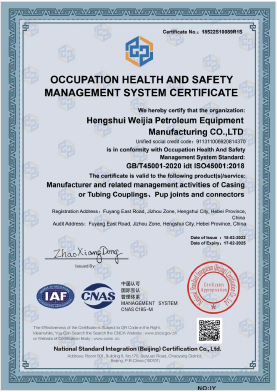- Afrikaans
- Albanian
- Amharic
- Arabic
- Armenian
- Azerbaijani
- Basque
- Belarusian
- Bengali
- Bosnian
- Bulgarian
- Catalan
- Cebuano
- Corsican
- Croatian
- Czech
- Danish
- Dutch
- English
- Esperanto
- Estonian
- Finnish
- French
- Frisian
- Galician
- Georgian
- German
- Greek
- Gujarati
- Haitian Creole
- hausa
- hawaiian
- Hebrew
- Hindi
- Miao
- Hungarian
- Icelandic
- igbo
- Indonesian
- irish
- Italian
- Japanese
- Javanese
- Kannada
- kazakh
- Khmer
- Rwandese
- Korean
- Kurdish
- Kyrgyz
- Lao
- Latin
- Latvian
- Lithuanian
- Luxembourgish
- Macedonian
- Malgashi
- Malay
- Malayalam
- Maltese
- Maori
- Marathi
- Mongolian
- Myanmar
- Nepali
- Norwegian
- Norwegian
- Occitan
- Pashto
- Persian
- Polish
- Portuguese
- Punjabi
- Romanian
- Russian
- Samoan
- Scottish Gaelic
- Serbian
- Sesotho
- Shona
- Sindhi
- Sinhala
- Slovak
- Slovenian
- Somali
- Spanish
- Sundanese
- Swahili
- Swedish
- Tagalog
- Tajik
- Tamil
- Tatar
- Telugu
- Thai
- Turkish
- Turkmen
- Ukrainian
- Urdu
- Uighur
- Uzbek
- Vietnamese
- Welsh
- Bantu
- Yiddish
- Yoruba
- Zulu
Understanding the Importance of Tubing and Casing in Oil and Gas Industries
Tubing and Casing Essential Components in Oil and Gas Extraction
In the oil and gas industry, the successful extraction of hydrocarbons from beneath the Earth's surface relies heavily on the proper use of tubing and casing. These two components serve crucial roles in the drilling process, ensuring the safety, efficiency, and viability of extraction operations.
Understanding Casing
Casing is a series of steel pipes that are installed in the wellbore after the drilling process. The primary purpose of casing is to provide structural integrity to the well, preventing the walls from collapsing and ensuring that fluids can be efficiently transported to the surface. Casing acts as a barrier, protecting both the surrounding environment and the groundwater from contamination by hydrocarbons and drilling fluids.
There are several types of casing, including surface casing, intermediate casing, and production casing. Surface casing is the first set of pipes installed and is typically situated in the upper sections of the well. It extends from the surface to a certain depth, providing a protective layer against contamination. The intermediate casing follows, which is installed at depths below the surface casing and can be used to isolate pressure zones and improve well stability. Finally, the production casing is set in the well to allow the flow of oil or gas from the reservoir to the surface.
Casing is not only crucial for well integrity but also for controlling pressure and preventing unwanted fluid migration. The installation of casing involves cementing the pipes to the borehole wall. This cementing process secures the casing in place and further enhances the barrier against fluid intrusion, ensuring that the surrounding environmental layers remain undisturbed.
The Role of Tubing
tubing and casing

While casing is vital for maintaining the structural integrity of the well, tubing serves as the conduit for the hydrocarbons once they are extracted. Tubing is a smaller diameter pipe placed inside the production casing. It allows for the efficient transport of oil and gas from the reservoir to the surface facilities, where it can be processed and either stored or distributed.
The choice of tubing is critical and is determined by factors such as the type of hydrocarbons being produced, the pressure conditions within the reservoir, and the overall design of the production system. Unlike casing, tubing is designed to withstand varying pressure levels and may require additional components, such as packers, to help maintain the separation of production zones or to isolate specific sections of the well.
One of the significant advantages of using tubing in oil and gas extraction is its ability to be easily removed and replaced if needed. This flexibility allows for maintenance or modifications to be made to the well without significant downtime or excessive costs.
Conclusion
Both tubing and casing are essential components in the successful extraction of oil and gas, each serving specific but complementary roles. Casing provides the structural integrity and environmental protection needed for a safe drilling operation, while tubing allows for the effective transportation of resources from the well to the surface.
As the oil and gas industry continues to evolve, the technology and materials used for tubing and casing also advance, leading to safer and more efficient extraction techniques. The proper selection and installation of these components are crucial for maximizing production while minimizing environmental impact. With ongoing innovations in this field, the future of tubing and casing looks promising, paving the way for more sustainable practices in hydrocarbon extraction.
-
Tubing Pup Joints: Essential Components for Oil and Gas OperationsNewsJul.10,2025
-
Pup Joints: Essential Components for Reliable Drilling OperationsNewsJul.10,2025
-
Pipe Couplings: Connecting Your World EfficientlyNewsJul.10,2025
-
Mastering Oilfield Operations with Quality Tubing and CasingNewsJul.10,2025
-
High-Quality Casing Couplings for Every NeedNewsJul.10,2025
-
Boost Your Drilling Efficiency with Premium Crossover Tools & Seating NipplesNewsJul.10,2025







